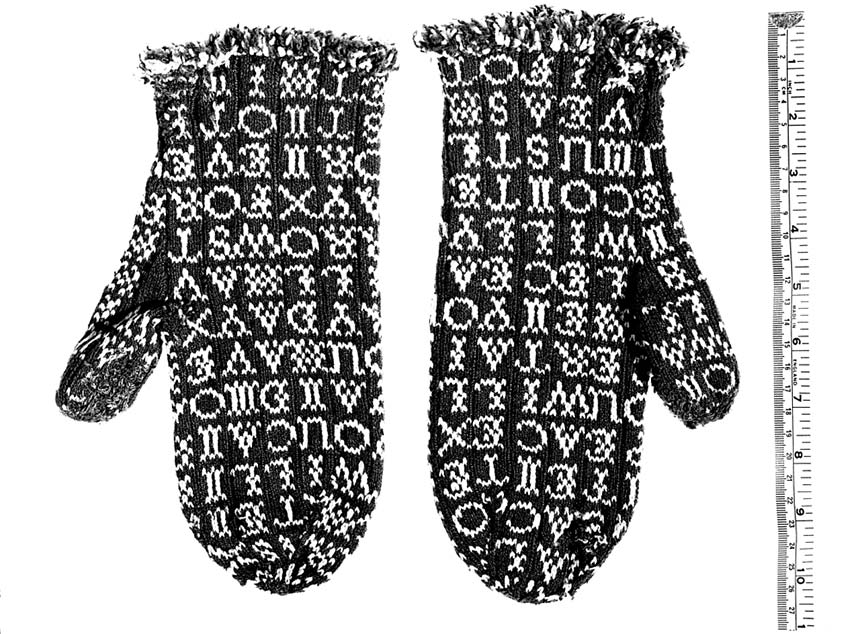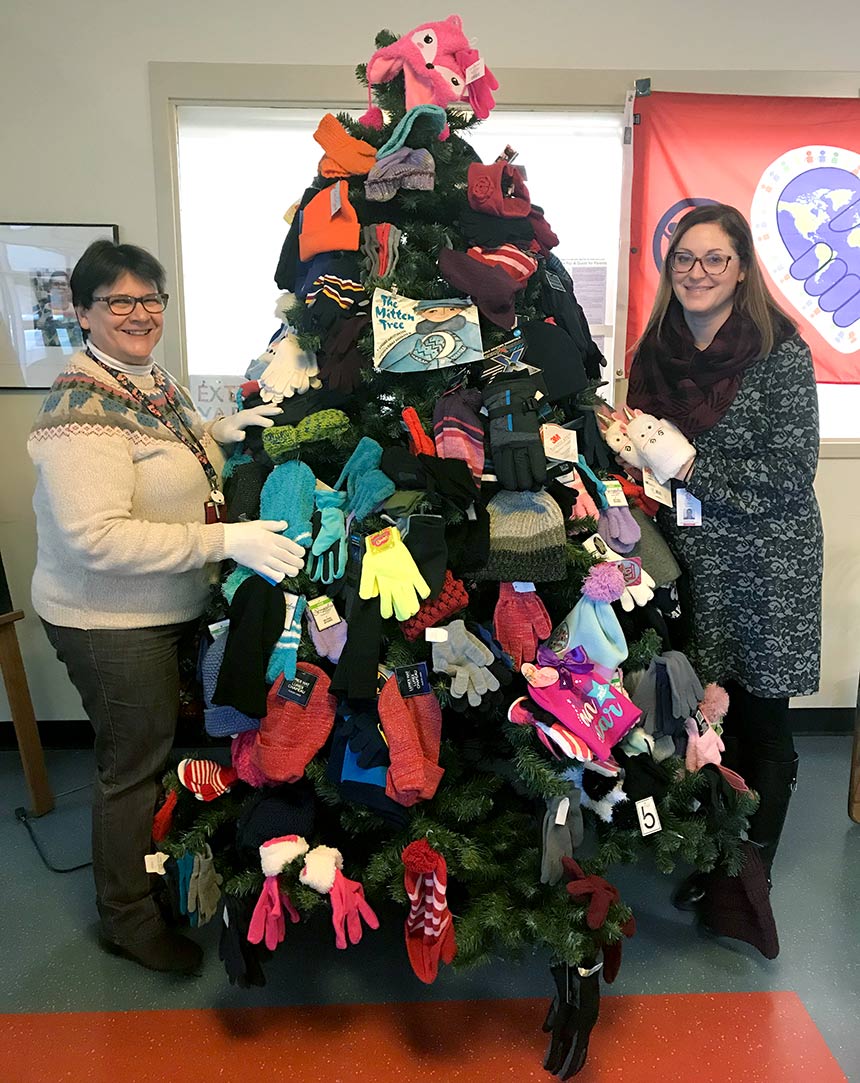Mary Schmidt, left, and Carrie Jones of the Guilderland Central Teachers Association with the Mitten Tree. Photo by Liza Frenette.
Did you know the oldest mittens known come from the country of Latvia? Or that the American Museum of Natural History has a pair of blue- and- white mittens from 1803 with a poem knitted into them?
Students in the town of Guilderland in the Capital Region are making mitten history today as they bring in warm, colorful hand coverings to share with others in need. Two educators set up a fake green fir as a Mitten Tree, and students soon began loading the branches with gloves, hats … and mittens.
Mary Schmidt, teaching assistant, and Carrie Jones, special education teacher, volunteered to help resurrect the grades 3-5 student council and carry out projects like this. They wanted “to bring back activities to bring the school together,” said Jones.
The students decided to collect mittens. Kids can “pay” to dress down on Comfy Days by bringing in hats, gloves and mittens. The goods will be brought to homeless shelters and missions in the Albany and Schenectady areas, and will also be provided to students who need them.
Schmidt and Jones, members of the Guilderland Central Teachers Association, come to the brick building before school on student council days to meet with the young students and plan projects.
“We have them visualize how to make school better,” said Schmidt. She has worked 19 years as a teaching assistant, and is assigned to the learning workshop or resource rooms to support children with academic, emotional and social needs.
“It’s the spirit of giving and doing for each other,” said Jones, who has been teaching special education for 13 years.
“Carrie and I touch base with a lot of kids in school. Everybody knows us,” said Schmidt.
Just as mittens come in pairs, so do buddies. Jones and Schmidt helped oversee fundraising for a student project to purchase a cheery red “Buddy Bench” now located in the school’s courtyard.
When someone is sitting on the bench, it means they need some companionship. A buddy.
They also led a student project to raise money for pet drives, and to purchase toys for the children’s wing at Albany Medical Center Hospital.
“We show them pictures of where the goods were brought,” said Jones.
Handy history
When your hands are next nestled inside a knitted mitten, consider their history. Here’s the poem knitted into the mittens at the American Museum of Natural History
"One thing you must not borrow nor never give away
For he who borrows trouble will have it every day
But if you have a plenty and more then you can bear
It will not lighten yours
if others have a share
You must learn to be contented then will your trouble cease
And then you may be certain that you will live in peace
For a contented mind is a continual feast."
The thumb of each mitten is adorned with the name "William Watson."

A Latvian mitten reported to be 1,000 years old has been found. When Latvian women were ready to be married, they were given a hope chest filled with many, many mittens, according to bustle.com.'s “The History of Mittens.” Each mitten had a unique pattern, knitted in a design to bless a house, bless the natural world, bless a husband, and more.
“One of the strongest sources of Latvian iconography in history is in the surviving mittens and their patterns,” reports the Bustle article.
Women found the making of mittens to be both artistic and empowering. Under the leadership of Maine mitten jobber Abby Condon, women earned money in a cottage industry by making mittens for soldiers during the Civil War, according to “The American Past: A Survey of American History” by Joseph R. Conlin. Condon continued to work as a jobber after the war, and eventually purchased knitting machines and set up a shop.
Making mittens for soldiers in WWI was also a historic effort.
